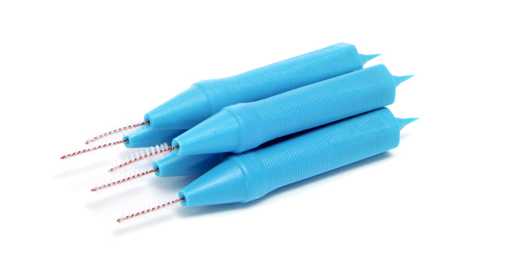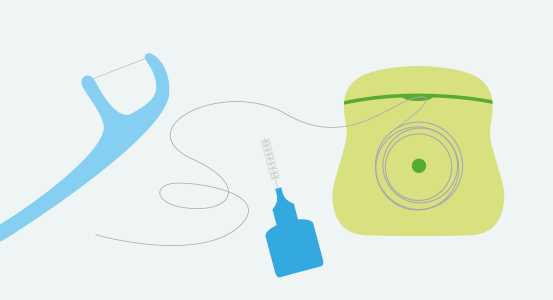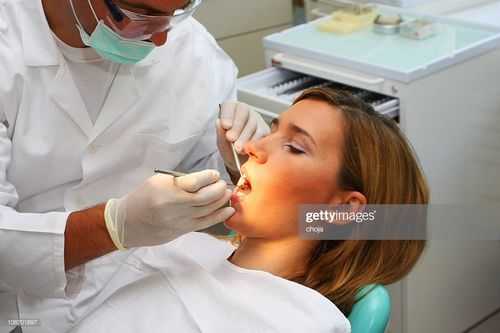Small brush, big impact: that’s what interdental brushes do

Unfortunately, brushing teeth alone is not enough to care for the teeth optimally. The cleaning of the teeth is particularly difficult, especially in the interdental spaces, which does not even reach a good electric toothbrush. Then the handle to the interdental toothbrush can be helpful. I explain to you here how to use it and what are the advantages and disadvantages.
That is why an interdental brush makes sense
The mini brushes make an important contribution to the cleaning of the spaces between the teeth. Because the smoother the teeth, the less bacteria can accumulate, the cause of tooth decay and periodontitis. In addition, about 40% of the tooth surface is hidden in the interstices, making it unattainable for the normal brush.
Since teeth often do not grow naturally as drawn by the ruler, bays are created in the interdental spaces, which are then also difficult to access for the regular cleaning tools. The interdental brush manages but. Thus, it contributes to a complete removal of all bacterial adhesions on the teeth.
If patients already have a condition such as tooth decay or pardontitis, it is all the more urgent to pay attention to the teeth interdental, as the bacterial load in the mouth should be kept as low as possible.
Enter your data in the form now and get your free consultation.
Do not be afraid, easy to contact us. Write us an email to: [email protected] or call us on 05141360010
These types of interdental brushes exist
Offered are toothbrushes with a fixed or removable handle, handles of different lengths or for attaching the electric toothbrush.
The shape of the brush is also variable. It ranges from “fir tree” to “brush” to “bottle” – with the latter, incidentally, most users get along.
The brush head is made of a plastic coated, flexible wire that is only a few millimeters long. It can be straight or angled.
The application of interdental brushes
It takes a little practice to get along with the little brushes. Do not be confused if irritation and irritation such as minor bleeding occur during familiarization. With regular use, this will take a few days. Rinse well with water and use a soothing mouthwash.
Interdental brushes are always used without toothpaste. Whether you devote yourself to thorough cleaning in the morning or in the evening is up to you. First, thoroughly brush your teeth as usual, then use the interdental brush. A short cleaning movement is already enough. Then rinse the brush under running water. Every 10 to 14 days, the cleaning tool should be replaced.
It is important to choose the brush to match your teeth distances. The dentist likes to measure the right size for you.
Incidentally, in comparative tests, all the interdental brushes examined performed quite well.
Advantages and disadvantages of brushes for interdental spaces
advantages
- different sizes available to find the right model for different tooth spacings
- various forms to select the suitable variant here as well
- Risk of injury to the gums in interdental brushes is not as high as in dental floss
- The papilla (the gumline between two teeth), retracts in the course of life, more and more food remains stuck between the teeth – Interdental brushes can stimulate papilla again
- highly recommended for bridges or gaps in the dentition, with implants they are indispensable.
disadvantage
- not recommended for narrow teeth
- considerably more expensive than dental floss
- Floss cleans in some places even more effectively
Alternatives to the interdental brush
As mentioned: If your teeth have grown very close to each other, you will not achieve good results with a toothbrush. Because by force the brush must not be used. Then you are on the right track with dental flossing.
A relatively new cleaning technique is the use of softpicks that do without the wire of the interdental brush. With Gummiborsten the gap is cleaned, which is particularly interesting for metal allergic persons. However, even here the tooth spacing must not be too small. Beginners in the field of interdental care should cope well with this. And also for the journey or the little cleaning in between, the soft picks are practical.
Conclusion
The interdental spaces should not be forgotten in your daily dental care. Interdental Toothbrushes effectively help you to reach the pads that the normal toothbrush can not reach. They are available in different sizes and shapes, in order to meet as many teeth distances as possible. For very narrow teeth, however, the use is not advisable.
The mini brush is applied without toothpaste after the actual brushing. Regular replacement is important to reduce the germ burden.
Have all your questions been clarified in the article? Do not hesitate to contact us. Write us an email to: [email protected] or call us on 05141360010
Your feedback is important to us!
Did you like the article and helped? Then leave us a comment
Related Posts
-

Interdental brush or tooth > Posted on March 30, 2015 September 26, 2018 by Rainer Ehrich Brushing teeth alone is not enough to keep your teeth and…
-

Apply interdental brush correctly, dentist petersen
The interdental brush – an important care tool Use an interdental brush correctly Latin among us should be immediately clear what function has an…
-

Interdental cleaning – which means and tools are there?
Interdental cleaning – Which means and tools are there? The interdental cleaning is often underestimated, the teeth are fine. But the gums may not. If…
-

Jaw pain after dental treatment
jaw pain Jaw Pain – The most common causes and treatment methods at jaw pain It is a widespread phenomenon that often causes discomfort for those…

